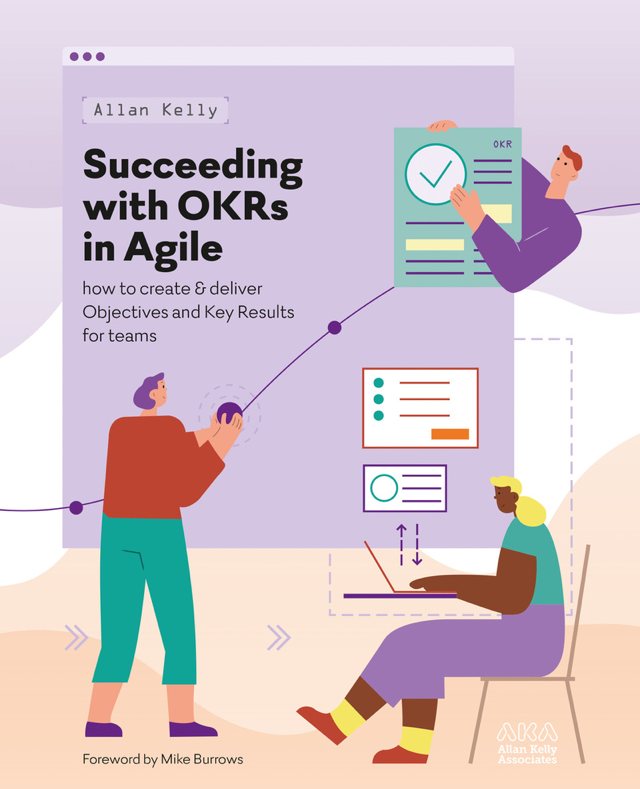Book review: Succeeding with OKRs in Agile
A practical guide for agile software development practitioners, by @allankellynet 2021-02-09 #product #book #review
2023 update: second edition now available
In Succeeding with OKRs in Agile (Amazon, LeanPub), Allan Kelly continues the exploration of modern commercial software development that he started in his previous books, Project Myopia, Continuous Digital, and The Art of Agile Product Ownership. As with the previous books, this new book about objectives and key results (OKRs) provides a practical guide for software development, two decades on from the Manifesto for Agile Software Development, and continues to unite the often-separate disciplines of development management and product management.
Test-driven product management
I found the first helpful insight in the first chapter’s introduction of OKRs’ purpose:
I sometimes think of OKRs as “Test Driven Management”. Decide what you want, the objective, next set a series of acceptance criteria: key results. Now get on and develop. Don’t consider yourself done until you can pass the tests and meet the objective.
The second chapter elaborates:
OKRs are a high level implementation of test driven development. Consequently they sit well with the agile mindset.
Each objective (the ‘O’) has a set of key results: the “KRs”. Each one of these key results is a test: has the result been achieved?
The author frequently relates OKRs to agile software development like this, which I found doubly-impactful. First, agile software development represents the context - a constraint even - for where I currently apply OKRs. But more than that, I have spent far more time reading about, pondering and discussing software development methodology over the last twenty years than I have OKRs. Most of the people I have ever worked with find themselves in the same position; I recommend this book to these people.
Practical humility
As with the previous books, I loved how Succeeding with OKRs in Agile offers practical advice. Not only does every chapter spends more time on applying OKRs in practice than on theory, several later chapters explicitly address how practice becomes more messy than theory:
Chapter 16: Going off-piste
Chapter 24: Everyday pitfalls
Chapter 25: Trouble with targets
I also appreciated how the book’s advice remains grounded in the uncertainty of real world product development, and avoids the arrogance of books that present a tidy management theory as though it will always do what it says on the tin, if you just apply it correctly. More management books would do well to adopt some of this humility.
Conclusion
Overall, this new book offers a fresh look at objectives and key results that has more to do with the kind of software development I’ve been involved in, in medium-sized companies, than what some US tech giant does.
⭐️⭐️⭐️⭐️⭐️ Recommended.


